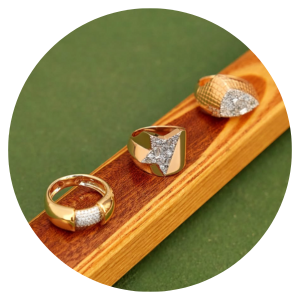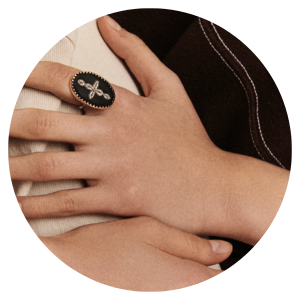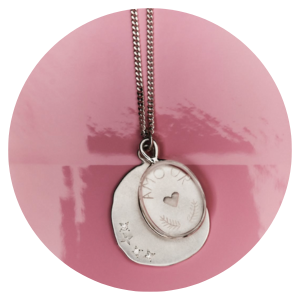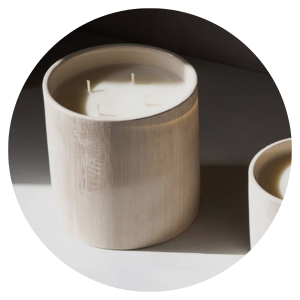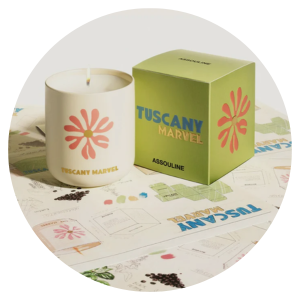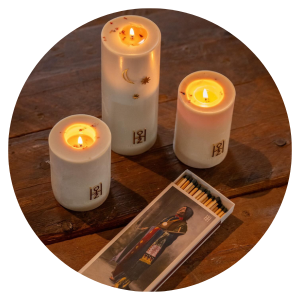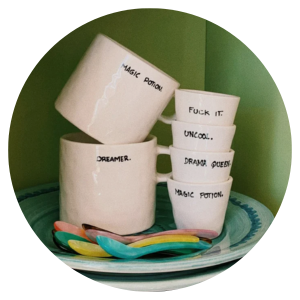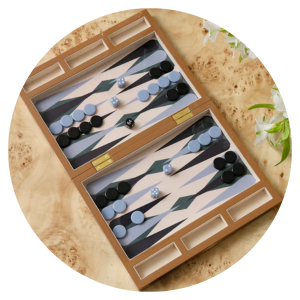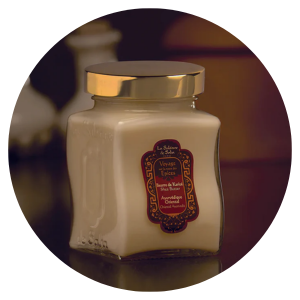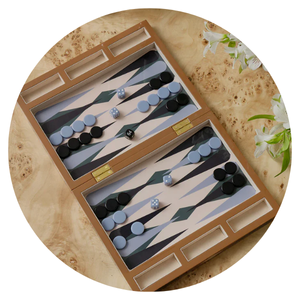54 card decks
Game rules
Discover the rules of many games that you can play with a pack of 54 cards!
Rummy
Number of players : 2 to 5 players.
Material : 108 cards (Two decks of 54 classic cards: 52 cards + 2 jokers)
Card hierarchy : Ace; 2; 3; 4; 5; 6; 7; 8; 9; 10; Jack; Lady ; King ; Ace (Ace has a double value).
Goal of the game : Place all your cards on the table and have the fewest points.
As soon as one of the players lays down all their cards, the round stops and the other players will accumulate points based on the cards they have left in their hand.
Dealing : After shuffling, deal 13 cards to each player.
The remaining cards become the stock (also called the draw pile) and the first must be placed face up.
First pose:
A player's first pose must be at least 51 points and contain a sequence without a joker (Q♠ - K♠ - A♠ or 8♥ - 9♥ - 10♥ for example).
Then he will be able to play normally.
Game turn:
The player whose turn it is must complete 3 steps:
1. Draw the 1st card from the discard pile if it allows him to place all or part of his game (in this case he is obliged to place).
2. Action : after drawing there are three possibilities:
- Lay : all or part of his cards.
- Either on no card on the table to create one or more combination(s).
- Either on his game or that of one of these opponents in order to complete one or more combinations.
- Exchange a Joker : possibility of exchanging a joker placed on the table if it replaces it with the card it represents. In this case, he must immediately make a combination with this joker.
- Do nothing and go directly to step 3.
3. Discard (mandatory) at the end of the turn. The player places one of the cards from his hand on the discard pile face up.
Combinations:
Three of a kind : 3 cards of the same value and different suits (no duplicate cards). For example, 4♦️ - 4 ♠️ - 4♣️ or V ♠️ - V♣️ - V♥️.
Square : 4 cards of the same value and different colors (no duplicate cards). For example: 6♠️ - 6♣️ - 6♥️ - 6♦️.
Suite : At least 3 consecutive cards of the same suit. For example: 9 ♠️ - 10 ♠️ - V ♠️
Joker : it can replace any card. Only one joker allowed per combination.
Evaluation of a combination:
The cards placed do not earn points (reminder: the objective is to have as few points as possible).
However, for the first pose, the combinations have a point value:
- Card from 1 to 10 : worth the value indicated on the card
- If the Ace is placed in a sequence after a King, it is worth 11. Likewise if it is in three of a kind or four of a kind.
- Jack, Queen, King : 10 points each.
If a player lays down all his cards at once, he plays rummy.
Replace a joker:
It is possible to replace a joker in your own game or that of your opponent (if you have already made your first pose) except in a set (but no problem for a four of a kind).
Conditions : possess the card represented by the joker.
Once the joker is replaced in the game, it must immediately be played in a combination. The player cannot keep it in his hand.
End of round:
The round ends as soon as a player has no more cards in their hand.
This player then only had one card left in his hand (since he must always discard a card at the end of a turn). He can therefore never play his entire hand and must always keep at least one card to discard.
Penalty points (for losers):
Each card that remains in a losing player's hand is worth a number of points.
- 2; 3; 4; 5; 6; 7; 8; 9; 10 : the value indicated on the card
- Ace : 11 points
- Joker : 20 points
- A player who has not posed does not count his points and takes 100 points directly.
- Rummy-sec : in the event of rummy-sec by one of the players, all the opponents' points double.
- Rummy-sec + Joker : if the player who poses suddenly ends up with a joker, the opponents' points quadruple.
President
Numbers of players : 4 players (minimum) and more.
Card hierarchy : 3 ; 4; 5; 6; 7; 8; 9; 10; Jack; Lady ; King ; Ace; 2.
2 wins all: no card can be placed after a 2 (or two 2s, three 2s, four 2s).
Goal of the game : Get rid of all your cards as quickly as possible.
The fastest players to discard their cards obtain a bonus for the next game and the slowest a penalty.
The winner is proclaimed president, the second vice president, the last Asshole and the penultimate vice Asshole.
Distribution : Deal all the cards equally for each player. Any excess cards are identified and put aside.
Game turn:
At the start, no player has an assigned role.
The first player places 1 to 4 cards of the same value in the center of the table.
The next player has two options:
- 1 . Pass.
- 2. Play : he must then place a number of identical cards of higher value.
If all players pass, the last player to play a card can play again. He then removes the cards from the center, places them aside and can start a new round with the combination of his choice.
At the end of the game, each player is awarded a title:
- President: The first player to get rid of all their cards. He will give the two cards of his choice to the Asshole for the next game.
- Vice-President : The second player who managed to get rid of all his cards. He will give his worst card to the vice-asshole.
- Vice-Asshole: The penultimate player. He will give his best card to the vice-president during the next game.
- Asshole: The last player to get rid of his cards. He gives his two best cards to the president.
The next part proceeds in the same way as the previous one. At the end of the game, the titles are awarded again.
The battle
Number of players : 2 or more.
Card hierarchy : 2; 3; 4; 5; 6; 7; 8; 9; 10; Jack; Lady ; King ; Ace (Ace being the strongest).
The colors of cards (diamonds, spades, hearts, clubs) are not distinguished.
Aim of the game : Have all the cards in the game.
Distribution : Deal all the cards to the players.
The players leave them in a pile in front of them, face down.
Game turn:
- Each turn, players turn over the highest card in their pile at the same time.
- The player who reveals the strongest card wins the round. He then places the upturned cards under his pile.
Battle :
If two cards turned over are of the same value, there is a “battle”:
- In this case, players must place a face down card, followed by a face up card. (start again, if there is another "battle").
- The player with the highest value card wins the entire pile.
End of Game :
When a player has all the cards in the game, he wins the game.
Belote
Numbers of players : 4 players (2 teams of 2 players).
Material : Game of 32 cards (game without 2 - 3 - 4 - 5 - 6 and Jokers).
Card hierarchy : 7 ; 8; 9; 10; Jack; Lady ; King ; Ace
Teams: North and South versus East and West. You must have one opponent on your left and one on your right.
Goal of the game : Be the first team to reach 501 points.
Distribution : Counterclockwise direction (same for the progress of the game).
Specificity : Each sleeve is made up of 8 folds.
Start of a round:
Deal 5 cards to each player.
Place the rest of the cards in the middle and turn over the top card. This map is called La Retourne.
In turn, players can decide to take or not take this card.
- If no one takes : Make a 2nd round with another color.
- If during this 2nd round a person takes the card to put it in their game, they must define (of their choice) a trump suit for the current round ( ♠️ ♣️ ♥️ or ♦️).
- If again no one takes, the players who do not take the card must say "two". All the cards are then redistributed.
- If the turn is taken : The color of the card becomes that of the Atour for the current round (unless the card is taken in the second round). Then, we distribute the rest of the cards so that each person has 8 cards in hand .
Card values:
Atour cards always prevail over cards of other suits.
Values of non-trump cards:
- Ace = 11 points
- 10 = 10 points
- King = 4 points
- Queen = 4 points
- Jack = 2 points
- 7 - 8 - 9 = 0 points
Values of trump cards:
- Jack = 20 points
- 9 = 14 stitches
- The value of other cards does not change
The winning team must win at least 8 2 points : this is the contract .
Progress of a round:
At each trick, each player places a card.
The first can place the card of their choice but the following must respect several rules:
- Follow : place cards that have the same color as the first card placed
- Cut : if a player does not have the suit, he can cut by adding an adornment.
- if the player cannot follow or cut, he can play any card (but it will not win the trick).
- Master : if your partner has played the highest card: he is the master. In this case, you don't have to cut. It is then possible to discard any card.
- Raising the trump card : to play a trump card on an already placed trump card, it is necessary to place one of higher value.
- Winning a trick : the player who played the highest card wins the trick. He will be the first to play during the next trick.
Calculation of points:
When the round is finished, after the 8 tricks, the points must be counted.
- 10 of der : the team that wins the last trick obtains 10 additional points.
- Contract won : if the team which took the return achieves 82 points or more, it completes its contract. Each team scores the corresponding points.
- Being in : if the winning team achieves less than 82 points, it is in. She then scores 0 points and the opposing team 162 points.
- Belote and rebelote : if a player has the trump King and Queen, he has Belote and Rebelote. The team then obtains a bonus of 20 points.
- Hood : if a team wins all 8 tricks, it scores 252 points.
Solitaire / Success
Numbers of players : 1 player
Material : Game of 52 cards (game without Jokers).
Card hierarchy : Ace ; 2; 3; 4; 5; 6; 7; 8; 9; 10; Jack; Lady ; King
Goal of the game : Reconstitute four piles of cards which each form an increasing sequence of the same color ( ♠️ ♣️ ♥️ or ♦️).
Set up :
Shuffle the cards and form 7 columns:
- First column : 1 face up card
- Second column: 1 face up card on 1 face down card.
- Third column: 1 visible card out of 2 hidden cards.
- Fourth column: 1 visible card out of 3 hidden cards.
- Fifth column: 1 visible card out of 4 hidden cards.
- Sixth column: 1 visible card out of 5 hidden cards.
- Seventh column: 1 card visible out of 6 face down cards.
The rest of the cards form the draw pile.
Leave room to your left for the 4 initial piles (or Foundation piles ).
Procedure:
Moving a card to one of the 4 foundation piles:
If Aces are visible, the player can slide them onto the spaces on the left that are free.
Once the Ace is set aside, he can place 2s, 3s, etc. on it. up to the Kings.
Always respect the ascending order and color of the foundation pile (♠️ ♣️ ♥️ or ♦️).
Each time the player removes a card from the columns, he turns over the one below.
Moving a card from one column to another:
In this case, two conditions must be respected:
- Create a descending sequence (unlike Foundation piles)
- Alternate the colors (red and black) in the columns: a red card must be on a black one and vice versa.
If a column becomes empty , the player can drag a card to that location.
It is also possible to move groups of cards if the alternation of red and black color is respected and if they constitute a decreasing sequence.
Draw a card :
When the player is blocked, he can draw one, two or three card(s). He then places his card(s) on the separate table and plays them when he can.
Moving a Foundation card to a column:
To unlock your game, it is possible to slide a foundation card (the one at the top) towards a column.
End of Game :
The game ends when all 4 foundation piles are complete.
Poker
Numbers of players : 2 to 10 players.
Material : Game of 52 cards (game without Jokers) + tokens.
Card hierarchy : Ace, 2; 3; 4; 5; 6; 7; 8; 9; 10; Jack; Lady ; King ; Ace (the Ace here has a double value).
Goal of the game : . The aim of the game is to win chips or money from other players by forming the best possible combination of five cards.
Set up :
Distribution : Each player receives two cards dealt face down which they look at secretly.
Next, five community cards are dealt in the center of the table, face up.
Paying the Blinds : before the dealer (the one who has the "dealer" token) distributes the cards, the two players to his left must pay the blinds which are the first two obligatory bets:
- The Small Blind (paid by the player to the left of the dealer): which is defined at the start of the game.
- The Big Blind (paid by the player to the left of the Small Blind): which is double the Small Blind.
Betting rounds:
Players place bets in a clockwise direction, starting with the player to the dealer's left.
Players can:
-
follow (put the same amount as the previous player)
-
bet (put an amount greater than the previous bet)
-
raise (increase the bet)
-
or fold (discard their cards and give up the hand).
Common cards:
After the first round of betting, three community cards are placed face up on the table. This group of cards is called the flop .
Next, a fourth community card is dealt, called the turn (or "fourth street").
Then, a fifth and final community card is dealt, called the river (or "fifth street").
Last round of betting:
After each distribution of community cards, a betting round takes place, players once again have the opportunity to call, bet, raise or fold.
Revelation of the cards:
If after the last round of betting, two or more players remain in play, they proceed to reveal their cards .
The player with the best five-card combination wins the pot.
Winning combinations:
The poker combinations, from weakest to strongest, are:
- Pair: Two cards of the same value.
- Double Pair: Two pairs of cards of the same value.
- Three of a kind: Three cards of the same value.
- Suite: Five consecutive cards of different suits.
- Suit: Five cards of the same suit, but not necessarily consecutive.
- Full: A pair and three of a kind in the same hand.
- Square: Four cards of the same value.
- Straight Flush: Five consecutive cards of the same suit.
- Royal Flush: The highest straight flush, from 10 to Ace of the same suit.
Pot award:
The player with the best hand wins the pot. In the event of a tie, the pot is shared between the players concerned.




